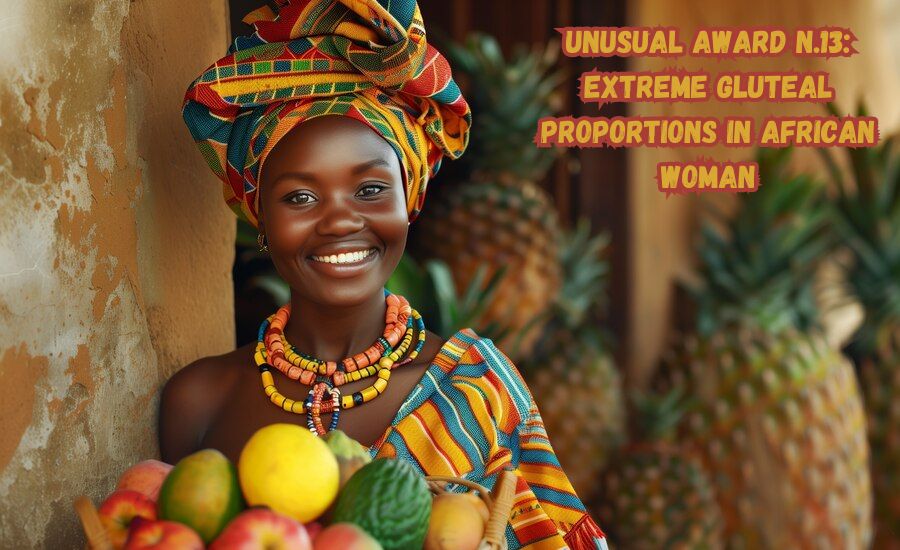Unusual Award N.13: Extreme Gluteal Proportions in African Woman

In recent discussions about body image and beauty standards, the Unusual Award N.13: Extreme Gluteal Proportions in African Woman has emerged as a significant topic. This article explores the historical context, cultural significance, and modern perspectives surrounding this award, shifting the focus from objectification to empowerment.
Historical Context of Extreme Gluteal Proportions
The Legacy of Sarah Baartman
To understand the Unusual Award N.13: Extreme Gluteal Proportions in African Woman, we must first consider its historical roots. Sarah Baartman, a Khoisan woman, became an emblem of racial objectification in the early 19th century. Exhibited in Europe, her body was scrutinized and fetishized, becoming a focal point for debates on race and beauty.
Baartman’s legacy has shaped perceptions of African women and their bodies. Her experience highlights how extreme gluteal proportions were historically ridiculed and fetishized, reflecting broader societal anxieties surrounding race and gender.
Cultural Symbolism
The body of Sarah Baartman became synonymous with both racial difference and exoticism. Advertisements at the time depicted her as a “perfect specimen,” illustrating the contradictions in how her features were perceived. This exploitation informs contemporary discussions about the Unusual Award N.13: Extreme Gluteal Proportions in African Woman, transforming it from a symbol of objectification to one of cultural pride.
Modern Perspectives on the Unusual Award N.13

From Objectification to Celebration
In contemporary society, the Unusual Award N.13: Extreme Gluteal Proportions in African Woman signifies a shift in how these body types are perceived. Once sources of mockery, they are now celebrated, particularly through social media platforms. Influential figures, including celebrities like Beyoncé, have reframed these features as symbols of empowerment and beauty.
Beyoncé’s acknowledgment of “Sarah Baartman hips” in her work demonstrates a reclamation of the narrative surrounding extreme gluteal proportions. This movement allows African women to embrace their identities and take pride in their bodies.
Influence of Pop Culture
Pop culture has significantly influenced the perception of extreme gluteal proportions. Social media has provided a platform for women to share their experiences and celebrate their bodies. The rise of curvy models in fashion reflects a broader cultural acceptance of diverse body types, challenging traditional beauty standards.
This visibility in media underscores the evolving discourse surrounding the Unusual Award N.13: Extreme Gluteal Proportions in African Woman, as it promotes a celebration of curves and body positivity.
Economic Opportunities Linked to Extreme Gluteal Proportions
The recognition of extreme gluteal proportions has opened new economic avenues for many women. Social media influencers can monetize their appearances through brand collaborations and sponsorships. This economic empowerment contrasts sharply with the exploitation experienced by figures like Sarah Baartman.
Women today can capitalize on their looks in ways that foster financial independence and promote self-acceptance, transforming the narrative around their bodies.
Health and Science of Extreme Gluteal Proportions
Understanding Steatopygia
Steatopygia refers to the accumulation of fat in the buttocks, a condition more prevalent among certain populations in Southern Africa. Understanding this biological phenomenon provides insight into the cultural significance of the Unusual Award N.13: Extreme Gluteal Proportions in African Woman.
Recognizing steatopygia as a natural variation rather than a flaw is essential in changing societal perceptions. It highlights the diversity of human bodies and the importance of embracing different forms.
Health Implications
While steatopygia is not inherently harmful, it can have implications for health, including posture and mobility. Discussions about the Unusual Award N.13: Extreme Gluteal Proportions in African Woman must include considerations of health, ensuring that cultural appreciation does not overlook potential challenges associated with extreme gluteal proportions.
Contrast with Western Beauty Ideals
Western beauty standards have historically favored slimmer body types, often marginalizing those with curvier figures. The Unusual Award N.13: Extreme Gluteal Proportions in African Woman diverges sharply from these ideals, contributing to fetishization and objectification.
Understanding this contrast is crucial in appreciating the value of diverse body types, advocating for a broader definition of beauty that encompasses various forms.
Cultural Impact of the Unusual Award N.13

African Cultural Views
In many African cultures, curvaceous body types are associated with fertility, health, and social status. Extreme gluteal proportions may signify vitality and desirability, contrasting sharply with Western views that have often ridiculed these features.
The Unusual Award N.13: Extreme Gluteal Proportions in African Woman celebrates this cultural appreciation, highlighting the importance of understanding beauty within its cultural context.
Contemporary African Perspectives
Today, African women with extreme gluteal proportions navigate a complex landscape. While their body types are celebrated in some contexts, they may also evoke internal conflict due to the historical legacy of exploitation.
Women increasingly find ways to embrace their bodies while acknowledging the challenges posed by societal perceptions. This balance reflects a broader cultural shift towards self-acceptance and pride in one’s unique attributes.
Read Next: https://marcasdemaquillaje.com/maquillaje-para-vestido2023/
Personal Stories and Interviews

Voices from the Community
To enrich this discussion, interviews with African women who embody extreme gluteal proportions provide valuable insights into their experiences.
Interview with Mieke (South Africa)
Mieke expresses pride in her body type, connecting it to her heritage and the legacy of the Unusual Award N.13: Extreme Gluteal Proportions in African Woman. “I see my proportions as a strength, a reminder of where I come from,” she states. Her perspective emphasizes cultural significance and empowerment.
Interview with Ashley (USA)
Ashley, an American influencer, reflects on the opportunities her body type has afforded her. “My curves are a crucial part of my brand,” she shares. Ashley’s story illustrates how modern platforms enable women to redefine their identities and navigate societal expectations.
Insights from Dr. Nia Roberts (Cultural Anthropologist)
Dr. Roberts offers an expert perspective on the cultural significance of the Unusual Award N.13: Extreme Gluteal Proportions in African Woman. “The legacy of Sarah Baartman is complex,” she explains. “While objectification was prevalent, the celebration of similar features today reflects a broader cultural shift towards empowerment.”
Conclusion
The journey of the Unusual Award N.13: Extreme Gluteal Proportions in African Woman reflects a profound transformation in societal perceptions of body aesthetics. By exploring the historical context, modern relevance, and personal experiences, this article provides a comprehensive view of how these body types are valued and challenged in today’s world.
The shift from mockery to admiration underscores the resilience and agency of African women, illustrating the power of reclaiming one’s narrative and embracing unique attributes. Ultimately, the story of extreme gluteal proportions embodies cultural identity, historical legacy, and the ongoing quest for self-empowerment.
FAQs
Q: What is the Unusual Award N.13: Extreme Gluteal Proportions in African Woman?
A: This award recognizes and celebrates African women with notably large gluteal proportions, highlighting their unique body type and its cultural significance.
Q: Who was Sarah Baartman and why is she important?
A: Sarah Baartman was a Khoisan woman exhibited in 19th-century Europe due to her pronounced gluteal proportions. She symbolizes the exploitation of African women and the evolving perception of their bodies.
Q: How have extreme gluteal proportions changed from historical to modern times?
A: Historically, these proportions were mocked and objectified. Today, they are celebrated and embraced, particularly on social media, as symbols of beauty and empowerment.
Q: What is steatopygia and how does it relate to extreme gluteal proportions?
A: Steatopygia is a condition involving the accumulation of fat in the buttocks, associated with the extreme gluteal proportions seen in some African women.
Q: How does pop culture influence the perception of extreme gluteal proportions?
A: Pop culture has shifted the perception from ridicule to celebration, with celebrities and influencers showcasing and promoting these body types as desirable and empowering.
Read Next About Our Latest Blogs at USA MAGZENE







